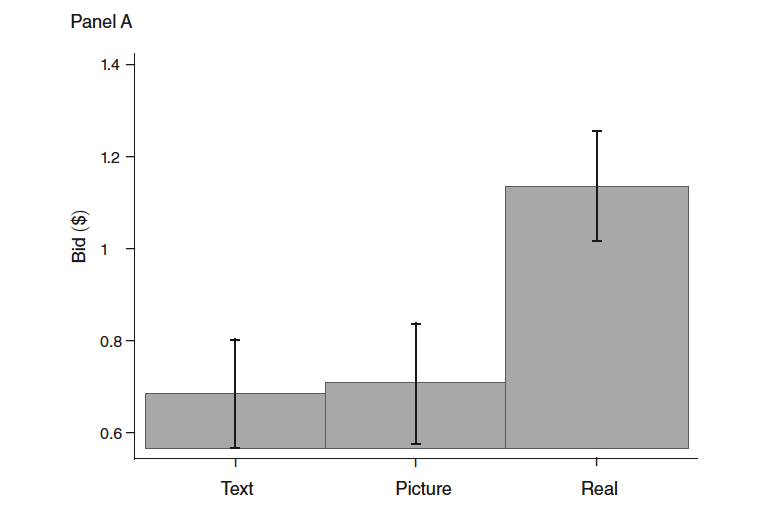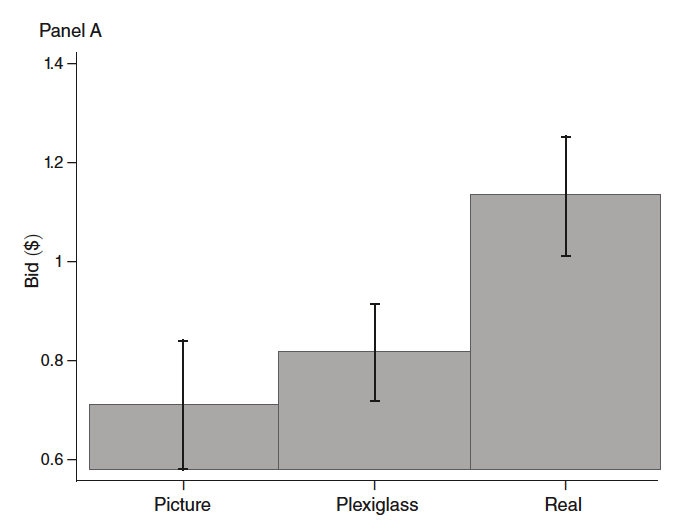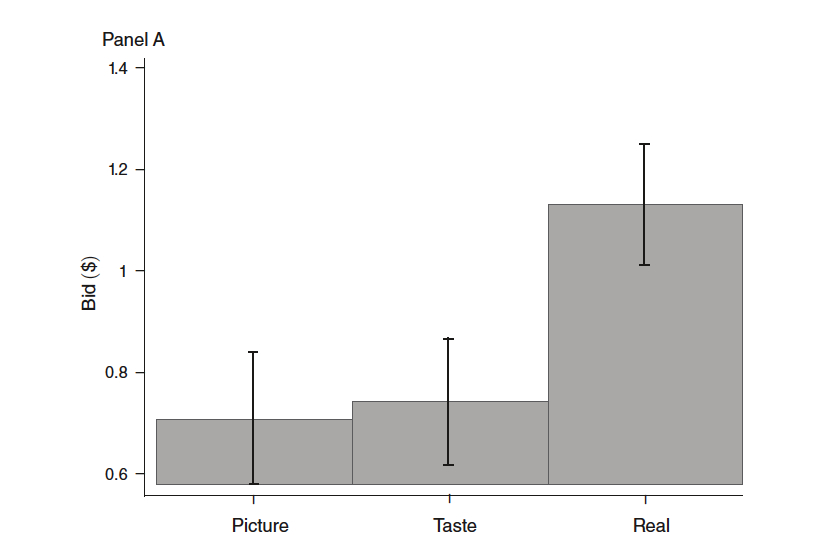
You go online to re-order a box of your favorite pens. Will you value the product more if the product page has a picture of the pens versus just a text description? Would you think the pens are worth more if you were in the office store and the pen was right in front of you? Does it matter if you are buying pens or food or any other product? In other words, does the way the item is displayed at the time of decision affect the dollar value that people put on them? Bushong and a team of researchers decided to test this out. The answers they came up with might surprise you. I know they surprised me.
How much would you pay for the chips? — In the first set of experiments they used snack food (potato chips, candy bars). Participants were given money they could spend. They had lots of choices, so they got to pick what they wanted to buy (by the way, they screened out people on a diet, people with eating disorders etc). The participants could read the name/brief description of the item (Lays Potato Chips in a 1.5 oz bag) or see a picture of the item, or have the real item right in front of them. Here’s a chart of the results:

The real deal counts — Having a picture didn’t increase the amount of money people were willing to “bid” for the product, but having the product right in front of them definitely did by up to 60%. Interestingly, the form of presentation didn’t change how much people said they liked the item, just the dollar value. In fact, for some items that they had said before the experiment they didn’t like, they still valued those more highly if they were in front of them.
What about toys and trinkets instead of food? — The researchers were surprised. They thought the images would be more powerful than text. They decided to try the experiment again, each time varying some conditions. For example, they tried the experiment with toys and trinkets instead of food. Same result.
What about behind plexiglass? — They wondered if with the food there was some unconscious olfactory (smell) cues that were triggering the brain, so they did another experiment putting the food in view, but behind plexiglass. If the food was in view, but behind plexiglass it was deemed to be worth a little more money, but not the same as if it were available within reach. Ah! they thought it is olfactory!, but then they found the same result with the non food items.

Ok, so we’ll give samples — Deciding to try one more thing, they went back to food items, but this time let people see and taste a sample. The actual item wasn’t there, but the sample was. Surely, they thought, the sample will be the same as having the actual item in front of them. Wrong again!

The researchers note that in this taste condition the participants didn’t even look at the samples in the paper cup, since they knew they were the same as the food in the package.
A Pavlovian response? — The researchers hypothesize that there is a physical Pavlovian response going on: When the product is actually available, that acts as a conditioned stimulus and elicits a response. The images and even text could become a conditioned stimulus and produce the same response, but they have not been set up in the brain to trigger the same response as the actual item.
As you start to think of the implications, here are some things to consider:
a) People were not going online and deciding whether or not to buy an item they were unfamiliar with. They were not at an apparel website deciding whether this was the right shirt or not. In those cases showing an image might have a huge impact. In these experiments the participants were all familiar already with the products.
b) Having the product physically available and not behind a barrier or plexiglass cover seems to be very important.
c) Sounds like those brick and mortar stores have an edge, at least on price.
Let me know your thoughts on the implications of the experiments.
And for those of you who like to read the research:
B. Bushong, L.M. King, C.F. Camerer, A. Rangel, Pavlovian processes in consumer choice: The physical presence of a good increases willingness-to-pay. American Economic Review, 2010, 100:1-18.
———————————
Did you find this post interesting? If you did, please consider doing one or more of the following:
add your comment
subscribe to the blog via RSS or email
sign up for the Brain Lady newsletter
share this post


Leave a Reply to Susan Weinschenk Cancel reply